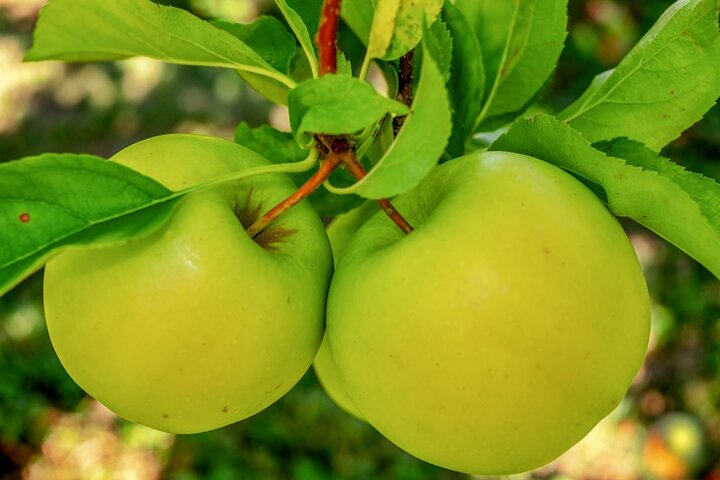Sarah Browning, Nebraska Extension Educator

Beautiful Red Apple. Image by Pixabay.com.
Thanksgiving pie is a tradition for many families and apple pie is a frequent favorite. Wouldn’t it be great to tell your guests you grew the apples they are enjoying? Unfortunately, many home landscapes are not big enough for even a semi-dwarf fruit tree, let alone two – since most apple trees need a second pollinizer tree to set fruit well. But there might be room for a couple columnar-form apple trees.
What are Columnar Apples?
In the 1960s, a McIntosh apple tree was found expressing a natural gene mutation causing it to grow in a columnar form - with many fruiting spurs along the main trunk. This caused the tree to develop a very narrow upright form, without the long horizontal branches typically seen on apple trees. Since that time, breeders have used this unusual gene to breed many different apple cultivars with the same unique growth habit. These trees are often called spire, pillar, colonnade or urban apples.
Their unique shape and size make them great for a small landscape. At maturity, trees reach 7-8 feet in height and only 2-3 feet wide. They can be planted along a fence or deck, but be sure to give them a good-sized area for root development so your trees will be healthy and vigorous.
However, remember that even though these trees are small making pruning and harvesting easier, fruit trees in general are one of the most labor intensive plants to add to your landscape. They require a lot of care to produce beautiful disease and insect-free fruits. Make sure you take that into consideration before you jump in.
As with any fruit tree, make sure the tree cultivars you choose have good winter hardiness for your area. The southeast corner of Nebraska, from Fremont south and Grand Island east, is in USDA hardiness zone 5b. Also look for cultivars with good resistance to the common apple diseases: fireblight, cedar-apple rust and apple scab. Plants lacking resistance will require regular fungicide applications to keep the tree healthy and the fruits disease-free.

Columnar Apple Cultivars
Stark Brothers and Monrovia nurseries are two sources for columnar trees. Stark Brothers is a mail-order nursery selling to retail customers online, but Monrovia is a wholesale nursery. If you want to purchase a Monrovia tree, you’ll need to use their “Find a Garden Center” tool to locate a local source. Monrovia Nursery’s Urban Apple series is reported to have good disease resistance and will be ready for harvest in about mid-September.
- Blushing Delight Urban Apple – green fruits blushed with red; light sweet flavor; ripens mid-September
- Stark Emerald Spire Apple – green apples with a golden blush; ripens early to mid-September
- Start Scarlet Spire Apple – red over green fruits; ripens late September
- Tasty Red Urban Apple – bright red fruits; medium-sized with firm, sweet, juicy flesh; ripens mid-September
- Urban Apples Blushing Delight – yellow-tinged apples with red blush
- Urban Apples Tasty Red – bright red fruits; sweet juicy flesh
- Urban Apples Tangy Green – tasty green fruits; crisp, juicy, tart, tangy flavor
- Urban Apples Golden Treat – sweet golden fruits; slightly tart flesh
Note – If you visit these company websites right now you’ll find these trees are currently out-of-stock; which makes sense since we are at the end of the growing season and they haven’t reset their inventory for next year yet. But be patient, wait until February or March and revisit the sites then.
More information on choosing fruit cultivars and managing a home orchard.
- Fruit Tree Cultivars for Nebraska, Nebraska Extension.
- Midwest Home Fruit Production Guide, Ohio State University, cost $26.00.
Images from Pixabay.com.
Search Our Archive
Associated Video
Apple Tree Pruning
Nebraska Extension Landscape Horticulture Specialist Kim Todd interviews Kimmel Orchard Operations Manager Vaughn Hammond about timing and technique for apple tree pruning.